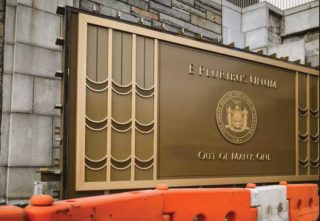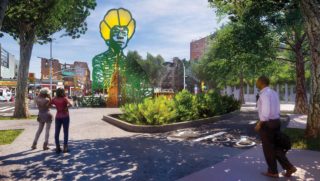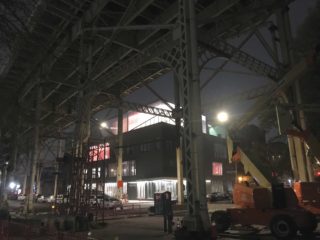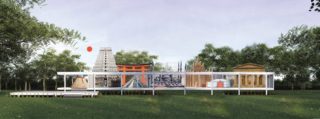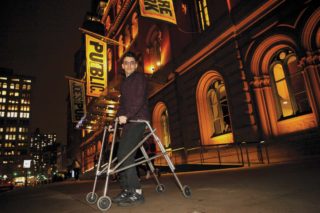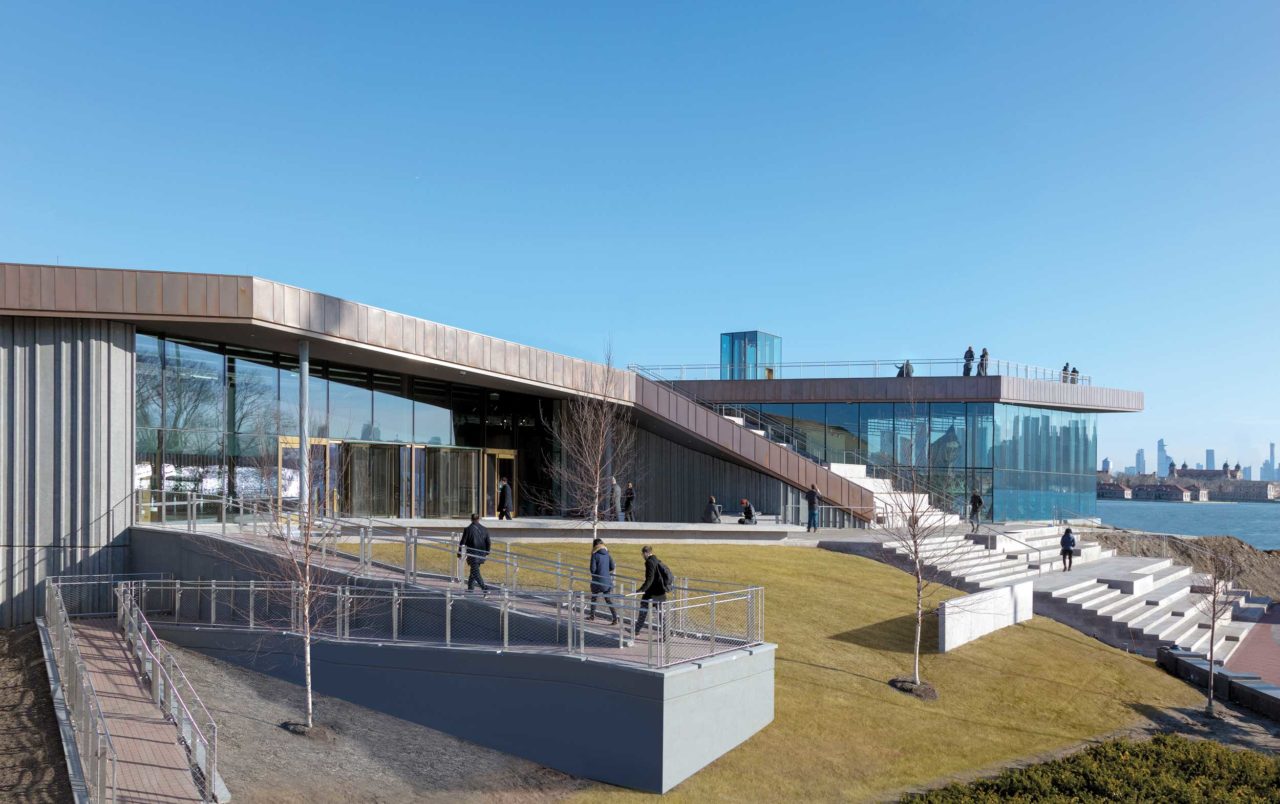

It doesn’t even have to be peak tourist season. On any given day, the line of visitors to the Statue of Liberty snakes almost all the way down the center path of Lower Manhattan’s beautifully restored Battery from the security tent behind Castle Clinton. At this time of year, it can be unbearably hot; it is definitely crowded. You hear what seems like every language in the world as you walk along.
Everyone there has one thing in common, however: a desire to experience firsthand the magic of Lady Liberty, a gift to the United States from France that has been the universal symbol of freedom around the world since 1886, when it first welcomed the public.
The new Statue of Liberty Museum, opened in May and designed by FXCollaborative, is a new icon to attract people to the landmark and teach them its history. For the first time since 9/11, it also gives them a close-up view of the statue’s original torch, which was in the pedestal and closed off to 80% of its daily visitors for security reasons.
Inside the museum, visitors can personalize their own notion of freedom through a series of interactive displays created by ESI Design. In the very last of three galleries, visitors see the torch, the harbor, and the statue; take a portrait; and leave a personal, inspirational message behind. But, according to Emily Webster, ESI’s head of media design, the goal was much broader. “The concept driving the museum is that liberty is not a passive idea,” she said, “but one that has to be proactive to maintain it.”
Watch EarthCam’s construction time-lapse video here.
The low-slung, single-story building sits on the northern end of Liberty Island, once known as Bedloe’s Island. According to Nicholas Garrison, FAIA, project designer and partner at FXCollaborative, the building’s unusual shape comes from its site, a parcel along the island’s craggy shoreline. Embracing the idea that a boxy building wasn’t in the cards, the design team tipped the whole thing on its axis and ended up with a triangle of space that became the instinctive location for the centerpiece of the project. “It’s a piece of terrain upon which we located a sharp-angled glass vitrine for the torch, in what was the most important corner of the site from water and land,” Garrison said. “Putting the torch in there made perfect sense as a way to celebrate the most visible and iconic symbol of the artifact.”
They took other cues from the landscape and what was already there. Fort Wood, an 11-point former fortress that is the base of the statue, gave license to the angles of the museum, but in the opposite spirit: the fort is turned inward, while the museum radiates outward, communicating that unique sense of joy that comes with freedom.
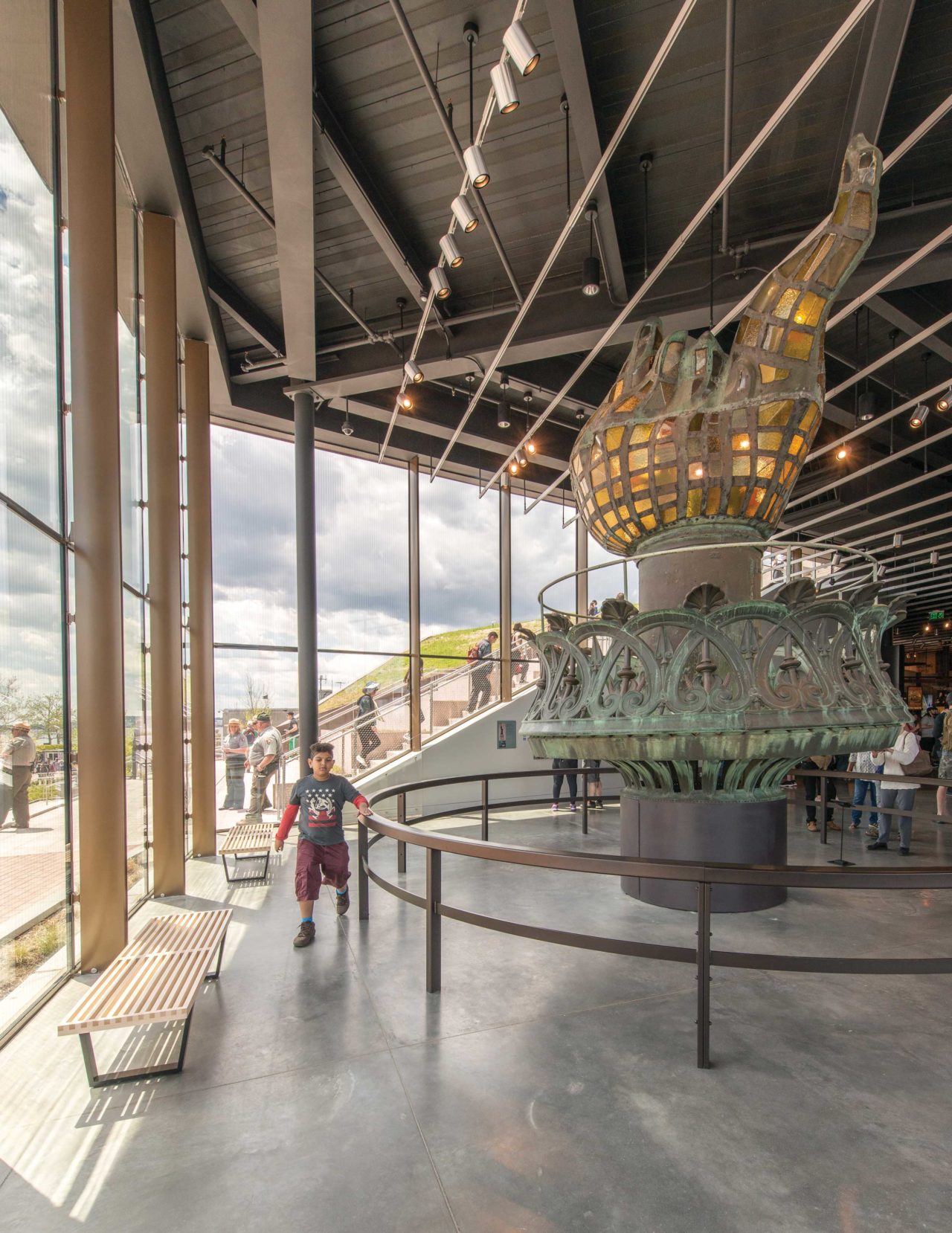
The glass in the 22-foot-high curtain wall around the torch is bird-proof. Other materials are those used by Richard Morris Hunt in the original design, such as pink Stony Creek granite. FXCollaborative used it for a monumental staircase that is part amphitheater, part picnic area, which leads to the entrance and the rooftop observation area. “It’s a public porch and a means of getting up and down,” Garrison said. “It’s meant to be a hang-out area.”
Heavy-gauge copper was substituted for the 1886 bronze on the fascia for cost reasons, and pre-cast concrete on the museum exterior is a stand-in for the handcut stones of Fort Wood. It’s craggy and rustic, Garrison points out, and reminiscent of the Palisades just upriver.
The roof is planted with native grasses to attract native and migratory birds, along with bees and butterflies. A portion of the roof is clear of planting to encourage visitors to take in the unique panoramic views.
Museum displays inside the building combine a high-tech approach with film, vintage photos, artifacts, and life-size molds of the statue’s face and foot. The 26,000-square-foot exhibition space is divided into three galleries: an Immersive Theater that shows a 10-minute video about the statue’s history and encourages viewers to contemplate what liberty means around the world; an Engagement Gallery that takes visitors to the warehouse where Frédéric-Auguste Bartholdi built the statue; and an Inspiration Gallery where guests can document their visit and enjoy the stunning views.
The presentation is all digital, fulfilling the museum’s goal of creating an institution that looks toward the future, according to Webster. “We wanted to offer a way to have a conversation about this important idea of liberty,” she said. “We did not want to create a museum that looked backward.”
Garrison is pleased with the project, which took about seven years to complete. “It does everything I wanted it to do,” he said. “It has its own true identity and its own sense of purpose. Thirty years from now, we’ll look at it as part of its own moment with its own DNA, and see how it still seems to fit and work.”









